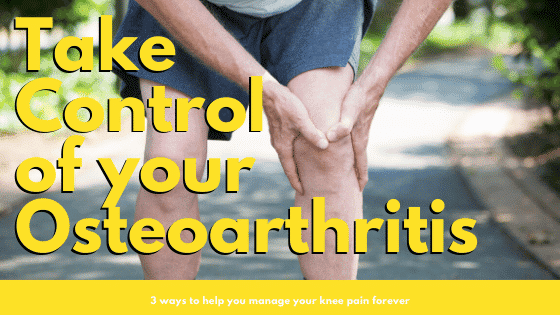“Approximately 1 in 3 people between 50 and 70 years of age have pain and reduced quality of life related to osteoarthritis.”
What is Osteoarthritis?
Osteo = Bone | Arthro = Joint | Itis = Inflammation
Osteoarthritis (OA) is a very common chronic condition affecting the whole joint, but predominately the articular cartilage (the cartilage covering the ends of the bones).
In OA, this articular cartilage becomes thin and fragile over time due to an inflammatory response accelerating the breakdown of the cartilage.
Osteoarthritis is the most common cause of difficulties with mobility and disability in older people.
Approximately 30% of the population between 50 and 70 years of age have problems related to osteoarthritis and the percentage increases you get older.
Although less common in younger and middle-aged people, approximately 5% of people between 35 and 54 years of age have osteoarthritis. Many of these people have injured their joints earlier in life.
What Are Common Symptoms of Osteoarthritis?
- Pain when moving or loading the joint.
- Joint stiffness and problems starting your day.
- Less range of motion.
- Swelling at the joint.
- Muscle tightness.
What Increases your chances of having Osteoarthritis?
There are a number of factors that increase your chance of developing osteoarthritis. There are 2 main types of factors you should be aware of.
- Non-Modifiable – The things out of our control
- Modifiable – The things we can control
Non-Modifiable Factors
Age
- As mentioned earlier, as people age the chance of developing Osteoarthritis increases due to normal degenerative changes
Sex
- On average women are more likely to develop OA compared to men
Heredity Factors
- If someone in your family has had OA then this can increase your chance of having this condition
Modifiable Factors – The things we can control
Luckily, there are a number of researched proven factors we can alter to help you take control over your osteoarthritis.
Education
A better understanding about the condition via a health professional, is an excellent way to improve your knowledge and confidence in your ability to manage the symptoms.
Weight Management
When moving, the load on the joint is much more than the actual amount of body weight applied. This means even a small difference in body weight can greatly reduce pain felt through the joint.
Physical Activity & Exercise
Exercise has been shown to be the best treatment for people who have trouble with osteoarthritis. Exercise reduces pain and makes it easier for people to do their daily activities.
Let’s look at the Pyramid below, which explains the best approach to treat OA.
The lower part in green is education, exercise and weight loss (if necessary). As mentioned above, targeting these three modifiable factors is essential for first line treatment.
The middle part in orange should be offered to those who did not improve with education and exercise or may need extra support.
Surgery (typically joint replacement) in red, should only be offered when the other treatments have unsuccessfully treated the symptoms.
Need Help with your Hip or Knee Pain?
At Physio Pal we offer an online-based education and exercise program which reflects the best latest research strategies for reliving pain and improving mobility for osteoarthritis (OA).
This program draws upon the latest research from the internationally recognised GLA:D® program to deliver first line treatment for individuals experiencing osteoarthritis symptoms.
More information can be found here.
Physio Pal is offering a free consultation to the program, including
- Initial Eligibility Consult
- 1 free education session
- lifetime access to educational resources
- 1 week access to exercise classes

